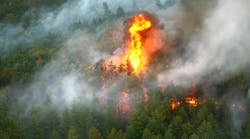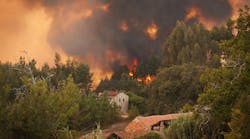In the wake of a disaster like Hurricane Sandy, the first priority is to protect life, safety and property. But once the emergency response has ended, addressing damage to neighborhood trees becomes central to long-term recovery.
Electric utility providers are already among the first-responders in the wake of the storm, working to keep the lights on and keep people safe in their homes. They also field frequent calls from customers concerned about the intersection of trees and power lines, and whether trees in their own yard pose a significant risk. These companies also have a crucial role to play in tree care and recovery, alongside elected officials, neighborhood leaders and the media.
The Arbor Day Foundation is actively engaged with utility providers seeking proactive steps to prepare customers at risk during storms. Through customer education, planting the right tree in the right place and a commitment to proper pruning and care, a great deal of tree-related damage can be prevented during disasters. These important steps also preserve the year-round benefits of urban forestry.
Investing in Proper Tree Maintenance
One of the community benefits of a robust tree canopy is reduced municipal costs. A typical urban forest of 10,000 trees will retain 10 million gallons (3.78 million liters) of rainwater per year, improving storm water management and reducing the expenditures needed for the city's sewer and wastewater infrastructure.
Another key advantage is the boost to local economies. Communities with ample tree-life attract more homeowners and professionals, and see property values rise between 10% and 20%, while retail areas with more trees draw more shoppers who stay longer.
Educating Homeowners
The Arbor Day Foundation offers counsel on how to properly assess damage to trees and provide needed care through a comprehensive Storm Recovery Kit. The kit contains both written materials and videos, and broadcast-quality DVDs are also available upon request.
In this kit, the Arbor Day Foundation gives a variety of key storm-recovery tips to electric utilities' customers, which, in turn, can minimize tree damage and prevent unnecessary outages. For example, homeowners are advised not to panic following a storm and consider waiting a few weeks or months before making their final decision about a tree. If a fallen tree does require immediate attention, the foundation recommends that they hire a professional arborist. Some tree specialists may offer their services, but they may be scam artists who don't know the industry or have the expertise to get the job done right.
If a homeowner decides to care for a damaged tree on their own, they must follow proper safety precautions and best practices. Finally, homeowners can prepare their trees for future storms. With proper care, much of the worst damage to trees and property can be prevented.
Partnering with Utilities
In addition to helping utilities to educate their customers, the Arbor Day Foundation is working with them to protect the tree canopy and improve the health of urban forests. Even so, there is room for even deeper partnerships.
Nearly 150 utility companies are already recognized by the foundation as a Tree Line USA, in honor of their commitment to proper tree planting, pruning and care in their respective service areas. Tree Line USA honors both public and private utilities for pursuing practices that protect and enhance America's urban trees and for helping customers to plant the right tree in the right place to save energy.
The healthy intersection between urban forestry and utility providers also informs the Energy-Saving Trees program. Launched by the Arbor Day Foundation as a pilot initiative in 2011, Energy-Saving Trees gives customers of participating utilities the chance to conserve energy and reduce electricity bills by receiving a free tree to plant in their own yard.
Through the program, an online tool allows customers to order trees and plant them in a location that will result is the highest possible savings through the shading effect. In addition to providing approximate energy savings, the tool also estimates the tree's other benefits, many of which are felt throughout the community.
Atlantic Cities Utilities, Delmarva and Pepco, serving millions of customers in Hurricane Sandy-affected areas, are three of the utilities participating in the Energy-Saving Trees Program.
Both now and in the future, the foundation looks forward to continuing its work with private and public sector partners on effective urban forest management solutions.
Randy Gordon ([email protected]) is a program manager for the Arbor Day Foundation. The foundation began in 1972 and has grown to include about 1 million members nationwide who plant millions of trees annually.
Editor's note: Utilities interested in learning more about how to work with the Arbor Day Foundation on storm recovery are encouraged to contact Randy at 402-473-9617. More information on the Foundation's storm recovery materials is available at wwww.arborday.org/media/stormrecovery.

